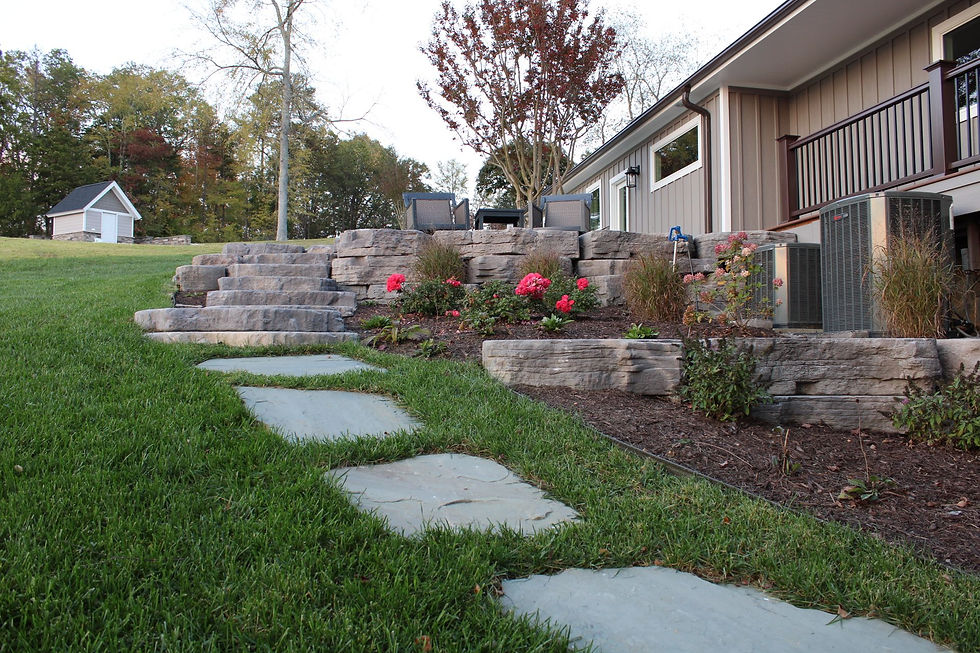Why You Should Add a Drainage System to a Paver Patio Project in Pittsylvania County, VA
- Halstead Media Group
- Jun 21, 2021
- 3 min read
Updated: Aug 24, 2021

Your patio is an extension of your home: an outdoor “room” or series of spaces where you can enjoy nature’s beauty with family and friends. A well-built patio is a great investment; but a poorly built one will become a money pit, especially when it comes to drainage. Here’s why you should add a drainage system to a paver patio project in Pittsylvania County, VA.
A paver patio that lacks a proper drainage system will eventually fail. Even worse, it can lead to foundation damage to your home, and erosion.
Problems Associated with Poor Drainage
Because pavers are not cemented together, the surface is inherently porous. Even if you use polymeric sand rather than regular sand, some water will percolate between the pavers. That’s fine… if the base beneath the pavers is well built.
Erosion is a problem around the edges of a patio. The perimeter pavers hold back soil but unless they are well-supported, this perimeter will eventually succumb to the movement of water and soil.
Over time, the freeze-thaw cycle can cause individual pavers to shift, heave, or sink, creating an uneven and potentially dangerous surface. It’s not a simple matter of removing and re-laying individual pavers: shifting signals a much bigger problem: a poorly installed base that will eventually cause the entire patio to fail.
Here are the steps that need to be taken to properly support the weight of the patio, and allow water to drain away from the home.
1. A Good Base
The base must consist of the proper depth of gravel topped with the proper depth of compacted bedding sand (depending on the site, soil, and other factors). Together, these materials will ensure the pavers stay in place. If the base isn’t thick enough to support the weight of a paver surface and allow water to percolate through, eventually the surface will start to fail.
2. A Drainage Slope
Heavy rains can lead to a lot of standing surface water, especially if your patio is flanked by a retaining wall or seat wall. By sloping the patio at a rate of one-quarter inch per linear foot away from the home, water will naturally drain away and protect the foundation.
3. Drains
Even on a sloped patio, obstructions such as retaining walls, seat walls, water features, or a linear fire pit could result in standing water. To prevent standing water, a drain may be necessary if water is not allowed to drain completely off and away from the patio. A drain can be constructed of PVC pipes installed under the pavers. These pipes may be perforated to allow water to seep slowly into the ground, or they may be solid to release water well away from the home and patio.
A French drain at the edge of your patio can divert water to plant beds or a pond.
Final Thoughts
You may have seen YouTube videos on how to install a paver patio. Have you ever noticed that most of these are done on flat land with deep topsoil? The reality is that most properties are not perfectly level; and the depth of excavation isn’t a pre-set 10”. The excavation depth as well as the type and amount of base needed is determined by soil type and drainage challenges. Don’t take chances. Work with a pro who will ensure that your paver patio drains properly, so it lasts a long time and protects your home.




Comments